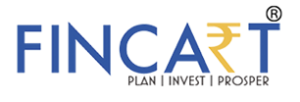Let’s say a manufacturing company is thinking about opening a new plant. An expansion of operations can be a great idea, after all, more products mean more customers, meaning more profits. But before jumping in, the company has to ask: Will the profits from this new factory be more than the cost of setting it up? That’s where the idea of cost of capital comes in.
So what is the cost of capital all about? In simple words, it’s the minimum return you need to earn on your investment to make it worth the effort and risk.
If the return is lower than the cost, an expansion would not be a good idea, would it? Here, we’ll explain everything you need to know about the cost of capital definition, its calculation, and why it matters for investors and businesses.
What Is the Cost of Capital?
Let’s begin by answering what the cost of capital is. It can be stated as the calculation of the minimum rate of return required to make a capital project or investment worthwhile. For a business, this capital project could mean launching a new product, building a new plant, upgrading technology, or even acquiring a different company.
Basically, any decision that requires a large amount of money and has long-term financial implications. For investors, it helps them decide whether putting money into a company’s shares, bonds, or any other asset is a good decision.
Now let’s understand the cost of capital meaning from an investor’s point of view. Investors also should know if the return they’ll get from an investment is higher than the cost of putting their money at risk. If the expected return is lower than the cost of capital, the investment wouldn’t make much sense. In that case, they’d be better off exploring other options that offer a better risk-reward trade-off.
If you are considering buying a particular company’s stocks, you first need to determine whether the investment is actually worth it. To do so, you’ll need to assess metrics like beta, which tells you how risky the stock is compared to the benchmark, and compare it with the expected return from the investment.
If the company’s stock is more volatile, you’ll want a higher return to justify the extra risk you’re taking on. This is exactly why understanding the cost of capital definition is so important for investors as well.
An investment service can help you assess whether an equity-oriented investment is worth it or not by looking at factors like past performance, market risks, beta, and risk-adjusted returns like the Sharpe, Sortino, and Treynor ratios.
Importance of Cost of Capital in Financial Management
Here’s why the cost of capital in financial management is so valuable to businesses and investors:
1. Helps Evaluate Investment Decisions
If the cost of capital is higher than the expected return from an investment, it means the investment isn’t financially viable. For example, if a company expects to earn an 8% return from investing in new IT systems, but its cost of capital is 9%, it would actually lose value by going ahead with the project.
This highlights the importance of cost of capital for investors as well. For example, if you have Rs. 1 lakh to invest, you could go for safe instruments like G-secs and FDs and earn about 6 to 7% return. If you want to take on higher risk for potentially higher rewards, you may look at stocks. But since returns here are not guaranteed, you are letting go of the 6 to 7% risk-free return in favour of a potentially higher, but uncertain profit.
2. Helps You Understand A Company’s Valuation
The cost of capital helps you judge whether a company’s stock price is fair or overvalued. A lower cost of capital generally means a higher value of future profits, which means a higher valuation. On the flip side, a higher cost of capital reduces the value of those future cash flows, making the company look less valuable.
3. Helps Optimise Capital Structure
Capital financing is typically done through a mix of debt (like taking loans and issuing bonds) and equity (like issuing shares). If debt is cheaper than equity, a company may lean more towards borrowing to reduce its overall cost of capital. But taking on too much debt also increases financial risk and can raise borrowing costs in the future.
On the other hand, issuing too much equity dilutes ownership. Analysts use the cost of both, equity and debt, to optimize their company’s capital structure.
Types of Cost of Capital
A company can decide how to externally finance their new capital project in different ways – It can raise money by issuing new shares to investors, called equity financing. It can take the cheaper route by borrowing money through loans or bonds, called debt financing. And finally, it can combine the two to optimize the overall cost of capital, as both options have their specific risks. The types of cost of capital in financial management include:
1. Equity Cost of Capital
When one makes an equity investment, they take on a higher level of risk compared to when investing in debt. As these investors are taking on more risk, they naturally want to earn more which is why the cost of equity is always higher than debt. This cost is calculated using the capital asset pricing model (CAPM).
2. Debt Cost of Capital
The cost of debt is simpler as there is a fixed repayment obligation. Companies borrow money from lenders and, in return, pay regular interest on the borrowed amount. This interest expense represents the cost of debt. The interest paid on debt is tax-deductible, meaning the effective cost of debt is even lower after adjusting for taxes.
3. Weighted Average Cost of Capital
Since companies generally use a mix of equity and debt to fund their projects, it makes sense to calculate the overall cost of capital by considering both sources. This combined rate is known as the Weighted Average Cost of Capital or WACC.
It tells you the average return a company must generate on its investments to satisfy both shareholders (equity) and lenders (debt). It weighs the cost of each type of financing based on its proportion in the company’s capital structure. We’ll take a closer look into its formula and calculation in the sections that follow.
Besides the main kinds we discussed above, there are also other types of cost of capital, like:
- Preferred Stock Cost of Capital: This type applies to companies issuing preferred shares. As these pay a fixed dividend, the cost of preferred stock is calculated by dividing the annual dividend by the current market price of the preferred shares. Its cost generally lies somewhere between the cost of equity and the cost of debt.
- Marginal Cost: This refers to the cost of getting one extra unit of capital. It also helps businesses decide if taking on new projects is financially sensible.
- After-Tax Cost: Since certain costs like interest on debt are tax-deductible, the after-tax cost considers these benefits for a more accurate picture of the actual financing cost.
If you are considering investing in equities, the cost of capital is only one of many factors you should assess before making a decision. Consider consulting with wealth advisory services to understand the implications of your investments better. They offer comprehensive services, such as personalised investment strategies, tax optimisation, investment planning for retirement, insurance and emergency planning, goal-based financial planning, short term goals, and legacy consulting services.
Components of Cost of Capital
The many components of cost of capital can be found in the above two formulas:
- Market Return: The returns expected from the market as a whole.
- Risk-free Rate: Returns from an investment without any risk. Generally, G-sec rates are used as a baseline.
- Tax Rate: The cost of debt always accounts for post-tax returns as interest on debt can be deducted.
- Risk Premium: Shareholders expect to earn more than the risk-free rate as they are taking on a higher level of risk. This refers to the extra return they expect by doing so.
Methods of Cost of Capital
The main methods of cost of capital calculation include calculating the cost of debt, and equity, and combining the two using WACC.
1. Cost of Equity (CAPM)
Cost of Equity = Rf + Beta * (Rm – Rf)
Where
- Rf = Risk-free rate
- Rm = Market returns
2. Cost of Debt (After-tax Cost)
Cost of Debt = (Interest Expense / Total Debt) * (1 – Marginal Tax Rate)
3. Weighted Average Cost of Capital
Combines the cost of debt, equity, and preferred stock to give an average rate that a company is expected to pay to finance its projects. It tells us about the overall risk and return expectations of both lenders and investors.
4. Dividend Discount Model
Companies that regularly pay out dividends can have their cost of equity estimated using the DDM. Here’s how to calculate cost of capital using this model:
Cost of Equity = (Dividend per Share / Share Price) + Growth Rate
Methods of Calculating Cost of Capital
If you’re wondering how to calculate the cost of capital, you can use the WACC. It is one of the most important and commonly used cost of capital formula, and is given by:
WACC = (E/V * Re) + (D/V * Rd * (1 – T))
Here,
- E = Market value of equity
- D = Market value of debt
- V = E + D
- Re = Cost of equity
- Rd = Cost of debt
- T = Corporate tax rate
Factors Affecting the Cost of Capital
To better understand the characteristics of cost of capital, we can look at what forces affect it:
1. Market Conditions
The equity component of the cost of capital depends on market conditions. When markets are bullish and investor confidence is high, companies can raise equity at a lower cost because investors are willing to accept lower returns. But during bearish markets, investors want the returns to scale up for the increased risk they are taking, thus pushing up the cost of equity.
2. Interest Rates
This affects the cost of debt. The higher the interest rates get, the costlier it gets to borrow money, thus increasing the cost of debt.
3. Other Macroeconomic Conditions
Factors like the GDP, growth rate, and inflation also have an impact on the average cost of capital.
4. Company’s Performance
A company performing consistently can finance its projects much more easily and cheaply as investors and lenders have greater confidence in its ability to deliver returns and repay debts.
5. Business Risk Profile
If the company’s risk profile is considered high, for example, if it is operating in a highly competitive industry or has irregular cash flows, its cost of capital will be higher. Investors and lenders will expect greater returns to compensate for the extra risk they are taking.
Strategies for Managing the Cost of Capital
Here are a few strategies on how to manage cost of capital:
- Optimising capital structure: The total cost of financing can be minimised by finding the right balance between debt and equity financing. Companies should also consider the right proportion of their retained earnings (profits reinvested into the business) for financing purposes.
- Increasing credit ratings: A higher credit rating makes it much easier for companies to get loans at lower interest rates.
- Risk management: Every business deals with financial and operational risks. Minimising these can help companies source financing at a lower cost of capital.
- Tax professionals: An experienced business tax consultant in india can suggest tax-efficient financing options and improve after-tax returns.
Weighted Average Cost of Capital (WACC)
The weighted average cost of capital (WACC) is a method to calculate the cost of capital in financial management. It gives us the average rate of return a company needs to compensate all its investors, that is, both shareholders and lenders. A high WACC means that the company faces higher costs to finance its operations and investments.
This could happen because of higher risks, volatile stock, expensive debt, or demanding equity investors. As a result, the company would need to generate higher returns from its projects. On the other hand, a low WACC indicates that the company is financially healthy and can raise funds at a relatively lower cost.
Cost of Capital Formula
The cost of the capital formula most commonly used is the WACC.
WACC = (E/V * Re) + (D/V * Rd * (1 – T))
Here,
- E = Market value of equity
- D = Market value of debt
- V = E + D
- Re = Cost of equity
- Rd = Cost of debt
- T = Corporate tax rate
Looking to save more on taxes? Contact our expert tax planner today to get personalized tax-saving strategies!
Cost of Capital vs. Discount Rate
There’s a small difference between the cost of capital vs discount rate. The cost of capital is the minimum return a company needs to earn to justify an investment, whereas the discount rate is used to find out what future cash flows are worth in today’s money.
It simply means that the cost of capital reflects the company’s own financing expectations, and the discount rate is more about how investors or analysts value future earnings today. These terms are often used interchangeably.
How Do You Calculate the Weighted Average Cost of Capital?
Check out an example to understand how to calculate cost of capital using WACC. Suppose a company has a market value of equity worth Rs. 7 crores and debt worth Rs. 3 crores. Using the CAPM, the company has calculated the cost of equity to be 10%, and the cost of debt before taxes is 6%. Let’s say the tax rate is 30%. This is the formula we’ll use to calculate the weighted average cost of capital:
WACC = (E/V * Re) + (D/V * Rd * (1 – T))
We are given that
- E = Market value of equity = Rs. 7 crores
- D = Market value of debt = Rs. 3 crores
- V = E + D = 10 crores
- Re = Cost of equity = 10%
- Rd = Cost of debt = 6%
- T = Corporate tax rate = 30%
WACC = (7 crores / 10 crores * 0.1) + (3 crores / 10 crores * 0.06 * (1 – 0.3))
WACC = (0.07) + (0.0126)
WACC = 0.0826 = 8.26%
The formula to calculate the WACC can be simplified. You just multiply the cost of each component (equity and debt) by its respective weight and then add them. This formula just uses the cost of debt after tax directly.
For example, if a company’s capital structure is 60% equity and 40% debt, and its cost of debt (after tax) is 6% and cost of equity is 9%, you can calculate WACC like this:
WACC = (Proportion of Equity * Cost of Equity) + (Proportion of Debt * Cost of Debt)
WACC = (0.6 * 0.09) + (0.4 * 0.06)
WACC = 0.078 = 7.8%
The result means that any new capital project the company takes on must generate at least a 7.8% return to be considered worthwhile.
Conclusion
For businesses and investors, the importance of cost of capital cannot be overstated. It helps both make smarter decisions about where to put their money and whether the potential returns are worth the risks involved.
It also ties directly into the concept of the opportunity cost of capital, which is the idea that if you choose one investment, you are giving up the returns you could have earned from another. That’s why careful calculation and assessment of estimating cost of capital ensures businesses and individuals don’t miss out on better opportunities.
The WACC is one of the most popular ways to measure a company’s cost of capital. It combines the cost of equity and debt, weighted according to their proportions in the company’s capital structure.
For investors, understanding a company’s WACC can provide insights into how efficiently the company is managing its finances. A higher WACC means higher risk and cost of financing, while a lower WACC suggests more efficient and cheaper access to capital.




